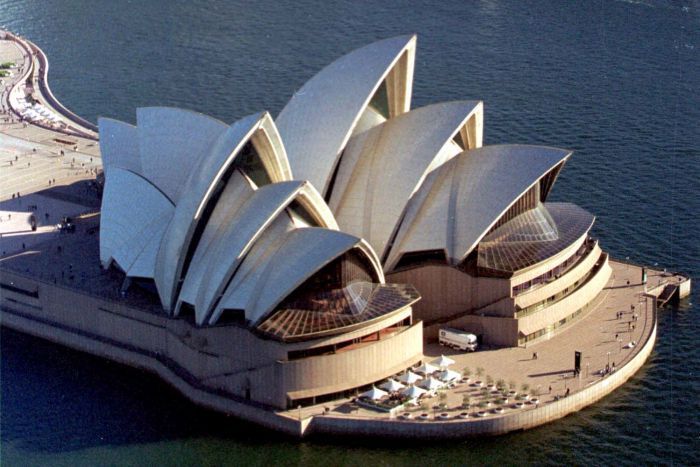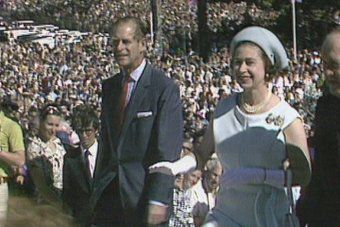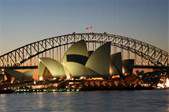

The Sydney Opera House is one of the most famous and loved buildings in the world and busiest multipurpose performing arts centers that includes dance, music concert, and theater. Located on the prominent peninsula of the Bennelong Point, in the heart of Sydney’s central business district, and visually juxtaposed against the strong curves of the Sydney Harbour Bridge, the Opera House adjoins the historic Royal Botanic Gardens, and overlooks Circular Quay the transport hub of Sydney’s ferries, trains and buses.
The Opera House is the epitome of magnificent architectural work of the 20th century, with multiple strands of creativity both in architectural and structural design.
The Opera House has about 1000 rooms, including five theatres, five rehearsal studios, two main halls, four restaurants, six bars and numerous souvenir shops.

It all started in 1958 with the Pritzker Prize winner Danish architect Jorn Oberg Utzon, directing construction after the New South Wales government approval led by the Premier Joseph Cahill. The vaulted roof shells were designed by Utzon in collaboration with internationally renowned engineers Ove Arup & Partners with the final shape of the shells derived from the surface of a single imagined sphere. Complex engineering problems and escalating costs made it a source of great public debate, which only subsided when the beauty and achievement of the completed building placed it on the world stage. The construction works were undertaken by Australian building contractors Hornibrook and the entire project taking 16 years to complete. The Sydney Opera House was formally opened by her majesty Queen Elizabeth II on October 20, 1973.
Aboriginal heritage is rightfully a most significant and dominating part of the Sydney Opera House. An example of that is “Ben Blakeney, a direct descendant of the Aboriginal Bennelong appears silhouetted as a tiny figure at the apex of one of the high roof sails, representing his ancestor and blessing the Opera House and its patrons.”
It is such a famous landmark for Australia and as stated by David Robertson the chief conductor of the Sydney Symphony Orchestra: “For Australians it shows a sense of pride which is unparalleled – it’s like how the French look at the Eiffel Tower or the Indians look at the Taj Mahal,”
The Opera House is not just a building, it is in itself is artwork, a creation, and as stated by Architects Ashton Raggatt McDougall “so delicate are the nips and tucks at Bennelong Point… …it’s like doing cosmetic surgery on the Queen”.
Nana Maskouri, an international singer said, “one of the most wonderful memories in my life was when I sang at the Opera House in Sydney. I will never forget that. It is one of the most beautiful Houses I have ever sung in my life.’’
Each year the Sydney Opera House hosts about 8.2 million visitors. On 28 June, 2007 it was included on the UNESCO World Heritage list as one of the world’s most famous structures to be monitored and maintained.
The Sydney Opera House operates 24 hours a day every day of the year except Christmas Day and Good Friday.
From an architectural perspective the Sydney Opera House can only be seen as a great design wonder of the modern world.





